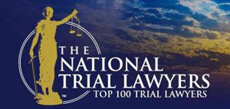Each year in the United States, approximately 1–2 million people sustain a traumatic brain injury (TBI), making it the second most common neurological disorder after headaches. Approximately 80% are mild TBIs (mTBI). Over the past 5–10 years, interest in mTBIs has been increasing because of sports concussions and injuries among U.S. military and civilian personnel serving in Iraq and Afghanistan. An estimated 15%–20% of soldiers sustain mTBIs during their deployment in these theaters.
Proving a mild traumatic brain injury can be difficult. The term “mild” is often misleading, as it refers to the traumatic event itself but not its effects. These injuries occur where the Glasgow Coma Scale score is greater than 13, loss of consciousness is less than 30 minutes, post-traumatic amnesia is less than 24 hours, or even a brief alteration of mental state (“dazed and confused”) occurs.
For many people suffering from head injuries, the effects are real but often difficult to prove with modern scientific techniques. Hence, these types of injuries have sometimes been called “invisible”. This is because the effects of brain injuries do not normally show up on “objective” tests such as X-Rays or EMG results.
Most mTBI’s are not demonstrated by conventional imaging like CT scans or MRI’s. This is because mTBI’s cause damage to the brain’s “axons”, or the white matter, which connects the grey matter, the brain cells. Axon damage is beyond the imaging capabilities of CT or MRI scanning techniques. Until the use of Diffuse Tensor Imaging (DTI), damage to the axons could only be evaluated at autopsy.
DTI allows the mapping of the diffusion process of molecules, mainly water, which reflects interactions with fibers, membranes, etc. This technique has been successful in showing microscopic injuries causing the brain injury including axonal shearing.
Although DTI is a relatively new science, many courts around the country are considering the evidence admissible to prove traumatic brain injuries. In fact, there is no case in the country that has excluded DTI when conducted by a competent doctor and presented with peer‐reviewed literature.
• Chiulli v. Newberry Fine Dining, Inc., (2013)
o Massachusetts District Court denied defendant’s motion to preclude plaintiff’s neuroimaging expert from testifying with regard to diffusion tensor imaging.
• Hammar v. Sentinel Ins. Co., Ltd., (2010).
o Florida District Court found DTI to be a reliable method, noting that it is “FDA approved, peer reviewed and approved, and a commercially marketed modality which has been in clinical use for the evaluation of suspected head traumas including mild traumatic brain injury.”
• Whilden v. Cline, (2010).
o Colorado District Court allowed an expert witness to rely on DTI evidence when testifying as to the diagnosis of mild TBI and its possible causation from an automobile accident as long as the expert’s opinion was not based solely on DTI.
Sources:
MacDonald, C.L.; Johnson, A.M.; Cooper, D.; Nelson, E.C.; Werner, N.J.; Shimony J.S.; Snyder, A.Z.; Raichle, M.E.; Witherow, J.R.; Fang, R.; Flaherty, S.F.; Brody, D.L.: Detection of blast-related traumatic brain injury in US military personnel. N Engl J Med 2011; 364:2091–2100.
Marr, A.L.; Coronado, V.G.: Central Nervous System Injury Surveillance Data Submission Standards: 2002. Atlanta, Center for Disease Control and Prevention, National Center for Injury Prevention and Control, 2002.
Silver, J.M.: Diffusion Tensor Imaging and Mild Traumatic Brain Injury in Soldiers: Abnormal Findings, Uncertain Implications. Am J Psychiatry; 2012, 169:1230-1232.
Stern, B.H.: Diffusion Tensor Imaging, Objective Proof of Traumatic Brain Injury. NJ Lawyer, Aug. 2014.
Tanielian, T.; Jaycox L.H.; Invisible Wounds of War: Psychological and Cognitive Injuries, Their Consequences, and Services to Assist Recovery. Santa Monica, Calif, RAND Corporation, 2008.
Thurman, D.J.; Alverson, C.; Dunn, K.A.; Guerrero, J.; Sniezek, J.E.: Traumatic brain injury in the United States: a public health perspective. J Head Trauma Rehabil 1999; 14:602–615.
Warden, D.: Military TBI during the Iraq and Afghanistan wars. J Head Trauma Rehabil 2006; 21:398–402.



